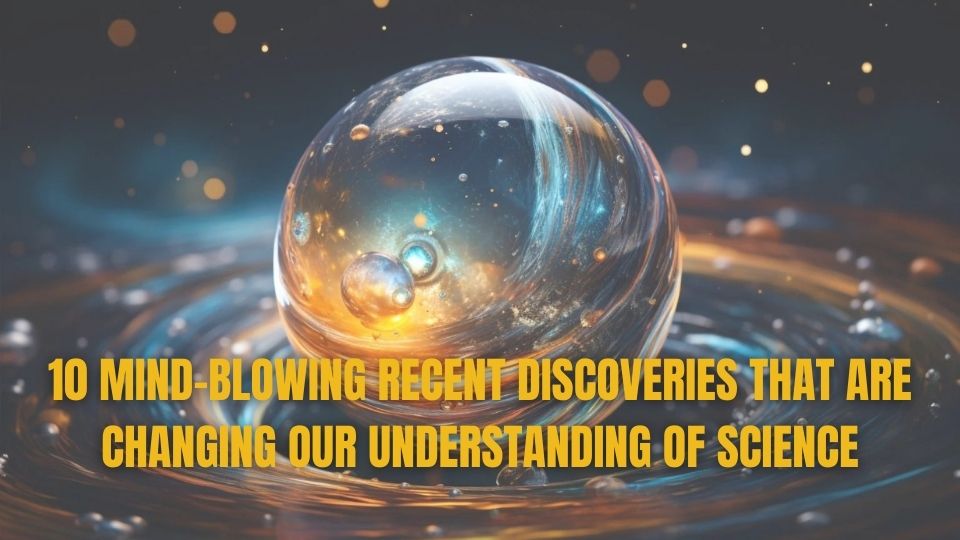The Science of Tomorrow: Emerging Innovations You Need to Know

The science of tomorrow is unfolding before our eyes. Innovations once thought impossible are now shaping our reality, redefining what humanity can achieve. From breakthroughs in artificial intelligence to game-changing advancements in healthcare and sustainability, these emerging technologies are set to transform every aspect of life.
In this article, we’ll explore the cutting-edge innovations that are driving progress and inspiring hope for a brighter future.
The Intersection of AI and Robotics
Artificial intelligence and robotics are merging to create systems that can learn, adapt, and perform tasks with unprecedented precision. Robots powered by AI are now being deployed in healthcare, agriculture, and manufacturing.
For instance, robotic surgeons equipped with AI assistance can perform complex operations with greater accuracy than ever before. In agriculture, robotic systems monitor crop health and optimize irrigation. These advancements are not just enhancing efficiency but also creating safer and more sustainable practices across industries.
Personalized Medicine: Tailoring Healthcare to Individuals

Gone are the days of one-size-fits-all healthcare. Advances in genomics, proteomics, and AI are ushering in an era of personalized medicine. By analyzing an individual’s genetic makeup, healthcare providers can design treatments that are tailored to their specific needs.
For example, cancer treatments are becoming more targeted, minimizing side effects and improving outcomes. Similarly, wearable health devices are empowering individuals to monitor their own health and make data-driven decisions about their well-being.
Space Exploration: The New Frontier of Human Ambition

The dream of exploring the cosmos is now closer to reality than ever before. Space agencies like NASA and ESA, along with private companies like SpaceX and Blue Origin, are making significant strides in space exploration.
From reusable rockets to plans for colonizing Mars, these innovations are expanding humanity’s reach into the universe. Additionally, missions to study asteroids and distant planets hold the potential for groundbreaking discoveries, including resources that could benefit Earth.
Sustainable Technologies: Reducing Environmental Impact
As the world grapples with climate change, sustainable technologies are becoming critical to reducing environmental impact. Innovations like carbon capture, renewable energy systems, and biodegradable materials are helping to create a greener future.
For example, advancements in solar panel efficiency and wind turbine technology are making renewable energy more accessible and cost-effective. These solutions are not only combating climate change but also driving economic growth in the green technology sector.
Synthetic Biology: Engineering Life
Synthetic biology is at the forefront of engineering life itself. By redesigning organisms to perform specific functions, scientists are developing solutions for challenges in medicine, agriculture, and energy.
For instance, engineered bacteria are being used to produce biofuels, while synthetic biology techniques are creating crops that can withstand extreme weather conditions. These innovations are opening doors to possibilities previously limited by nature.
Quantum Internet: Redefining Communication
The development of the quantum internet represents a leap in communication technology. Unlike traditional networks, quantum networks use quantum bits (qubits) to transmit data securely and instantaneously.
This innovation has profound implications for cybersecurity, as quantum encryption is nearly impossible to hack. Additionally, it could revolutionize global connectivity, enabling faster and more reliable communication systems.
3D Bioprinting: The Future of Organ Transplants
The field of 3D bioprinting is transforming healthcare by creating organs and tissues for transplantation. Using bio-ink made from cells, scientists are printing complex structures that mimic natural tissues.
This technology holds the potential to address the organ donor shortage and improve patient outcomes. From heart valves to skin grafts, the applications of bioprinting are vast and life-changing.
Autonomous Vehicles: Redefining Mobility
Autonomous vehicles, including self-driving cars and drones, are reshaping transportation. These systems rely on advanced sensors and AI algorithms to navigate safely and efficiently.
In addition to improving road safety, autonomous vehicles are reducing carbon emissions and enhancing urban mobility. For example, delivery drones are streamlining logistics, while self-driving cars are paving the way for smarter cities.
Climate Engineering: Innovations to Save the Planet
Climate engineering, also known as geoengineering, involves large-scale interventions to combat climate change. Techniques such as solar radiation management and carbon dioxide removal are being explored to stabilize global temperatures.
While these methods are still in the experimental stage, they represent a potential solution to mitigate the effects of climate change. However, ethical and environmental concerns must be addressed as these technologies develop.
Fusion Energy: Powering the Future
Nuclear fusion is the ultimate clean energy source, offering the potential for limitless power without harmful emissions. Recent experiments have achieved significant milestones, bringing us closer to practical fusion energy.
This technology could revolutionize energy production, providing a sustainable solution to meet the growing demand for electricity worldwide.
Nanotechnology: The Science of the Very Small
Nanotechnology is enabling breakthroughs in medicine, materials science, and energy. By manipulating matter at the atomic level, scientists are creating materials with enhanced properties, such as increased strength and conductivity.
In medicine, nanotechnology is being used to develop targeted drug delivery systems, improving the efficacy of treatments while minimizing side effects.
Education in the Future: Virtual and Augmented Reality
Virtual and augmented reality (VR/AR) are transforming education by creating immersive learning experiences. These technologies allow students to explore complex concepts in interactive ways, from simulating historical events to visualizing scientific phenomena.
By making learning more engaging and accessible, VR and AR are preparing future generations for a world driven by innovation.
Conclusion: A World of Limitless Potential
The science of tomorrow is filled with promise. As emerging innovations continue to push the boundaries of what is possible, they inspire hope and challenge us to dream bigger.
By embracing these advancements, humanity can address pressing challenges, create new opportunities, and build a future that is as exciting as it is transformative.






